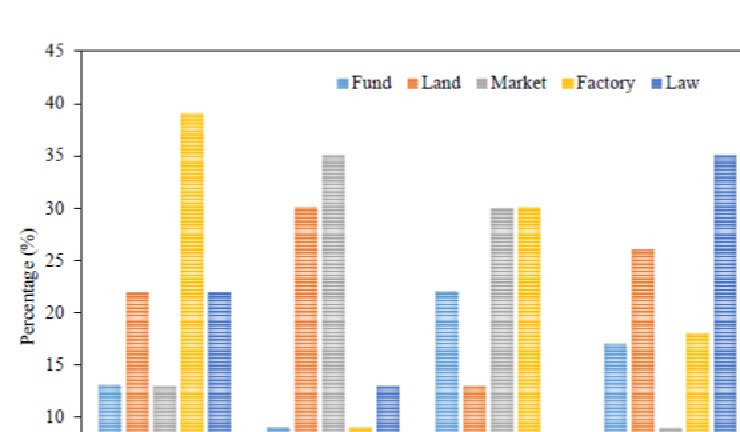Estimation of the Recyclable Waste amount Collected by Informal Recycling Shops: Case Study in Nay Pyi Taw, Myanmar 10.32526/ennrj/19/2020157
Main Article Content
Abstract
The study investigates and estimates the type and amount of recyclable waste collected by informal recycling shops in Nay Pyi Taw by using face to face interview for 23 informal recycling shops in Nay Pyi Taw in May 2020. The descriptive statistics (frequency and percentage) and inferential statistics (two-sample paired t-test and Pearson’s correlation) were applied. According to the results, the average estimated waste amount collected by each recycling shop per day before and during the novel coronavirus (COVID-19) pandemic was 1,798 kg (Min. 0 to Max. 1,401 kg) and 856 kg (Min. 0 to Max. 892 kg), respectively. As a result of this study, it can be seen that the amount of daily collected waste has a positive relationship with the daily income of recycling shops, and COVID-19 has impacted the income of informal recycling shops. According to the results, getting an official license, financial problems, and limited land for managing buying recyclable waste, unstable market conditions, no factory in Nay Pyi Taw and no definitive legislation or laws, seasonal changes are the main challenges for informal recycling shops. This study indicates the ways to mainstream the informal sectors in waste management schemes. In addition, the results of this study can be useful in developing national and regional waste management plans and programs.
Article Details
Published articles are under the copyright of the Environment and Natural Resources Journal effective when the article is accepted for publication thus granting Environment and Natural Resources Journal all rights for the work so that both parties may be protected from the consequences of unauthorized use. Partially or totally publication of an article elsewhere is possible only after the consent from the editors.
References
Obilor EI, Amadi EC. Test for significance of Pearson’s correlation coefficient (r). International Journal of Innovative Mathematics, Statistics and Energy Policies 2018;6:11-23.
Conroy R. Sample size: A rough guide [Internet]. 2006 [cited 2020 Jun 5]. Available from: https://www.beaumontethics.ie/docs/ application/samplesizecalculation.pdf.
Chelsea M. An overview of Myanmar’s recycling industry: A report by building markets [Internet]. 2019 [cited 2020 Jun 20]. Available from: https:// buildingmarkets.org/ blogs /myanmar/2019/12/11/an-overview-of-myanmars-recycling-industry-a-report-by-building-markets/.
Constance AM, Robert AC. Paired-samples tests of equivalence. Communications in Statistics - Simulation and Computation 2012;41(10):1928-43.
Ceylan RF, Akpinar MG, Cherciov A, Ozkan B, Gul M. Consumer preferences of organic products for romania. International Journal of Agriculture, Forestry and Life Science 2018;2:47-55.
Department of Population. The 2014 Myanmar Population and Housing Censuses: Nay Pyi Taw. Nay Pyi Taw, Myanmar: Ministry of Labour, Immigration and Population, the Republic of the Union of Myanmar; 2015.
Environmental Conservation Department (ECD). Myanmar National Waste Management Strategy and Master Plan (2018-2030). Nay Pyi Taw, Myanmar: Ministry of Natural Resources and Environmental Conservation, the Republic of the Union of Myanmar; 2020.
Gerold A. Integrating the Informal Sector in Solid Waste Management Systems: Basic Aspects and Experiences. Germany: Frankfurt am Main; 2009.
Hoornweg D, Bhada-Tata P. What a Waste: A Global Review of Solid Waste Management. Urban Development Series; Knowledge Papers No. 15. Washington D.C., USA: World Bank; 2012.
Israel GD. Determining Sample Size. University of Florida, USA: Florida Cooperative Extension Services, 1992.
Kyessi A, Omar H, Saria J. The influence of technological factor to the sustainability of informal solid waste collection livelihood in urban areas: The case study of Kinondoni municipality. Research Journali’s Journal of Economics 2017;5:1-15
McDonald JH. Handbook of Biological Statistics. 3rd ed. Maryland, USA: Sparky House Publishing, Baltimore; 2014.
Schneider P, Hung AL, Sembera J, Silva-Martinez RD. The role of the informal sector in a rurbanized environment. In: Mihai F, editor. Solid Waste Management in Rural Areas. Intech Open; 2017. p. 27-52.
Ngoc UN, Schnitzer H. Sustainable solutions for solid waste management in Southeast Asian countries. Waste Management 2009;29(6):1982-95.
Omar H. The influence of institutional factor to the sustainability of informal solid waste collectors: The case study of Kinondoni municipality-Tanzania. Global Scientific Journal 2019;7(10):1672-87.
Premakumara DGJ, Hengesbaugh M, Onogawa K, Hlaing OMT. Waste Management in Myanmar: Current Status, Key Challenges and Recommendations for National and City Waste Management Strategies. Japan: UN Environment and Institute for Global Environmental Strategies; 2017.
Ratner B. The correlation coefficient: Its values range between +1/−1, or do they?. Journal of Targeting, Measurement and Analysis for Marketing 2009;17:139-42.
Tun MM, Juchelková D. Estimation of greenhouse gas emissions: An alternative approach to waste management for reducing the environmental impacts in Myanmar. Environmental Engineering Research 2019;24(4):618-29.
The Asia Foundation. Myanmar Business Environment Index (MBEI): COVID-19 impact on business [Internet]. 2020 [cited 2020 Jun 20]. Available from: https://asiafoundation. org/publication/myanmar-business-environment-index-covid-19-impact-on businesses/.
Wahab B, Ola B. The mode of operation and challenges of informal waste collection in Ibadan. Ibadan Journal of Sociology 2017;6:85-117.
Wahab B, Ola B. Effects of seasonal variation on informal waste collection in Ibadan, south-west Nigeria. Environment and Pollution 2018;7(1):36-45.

